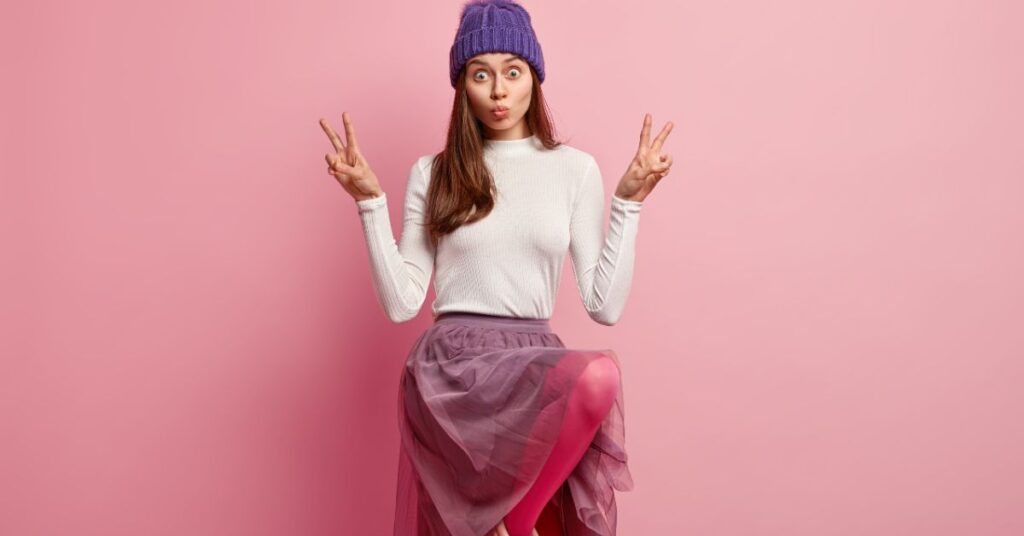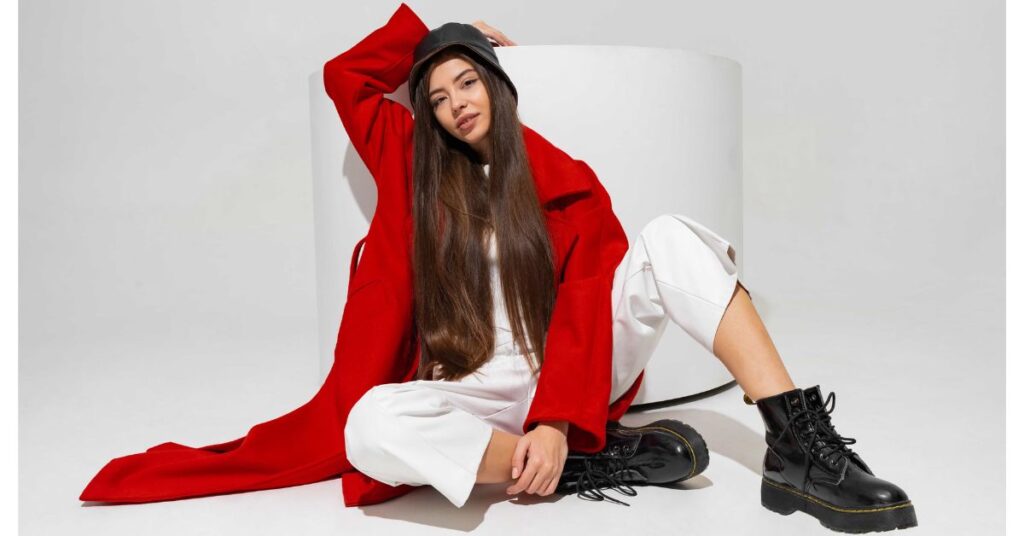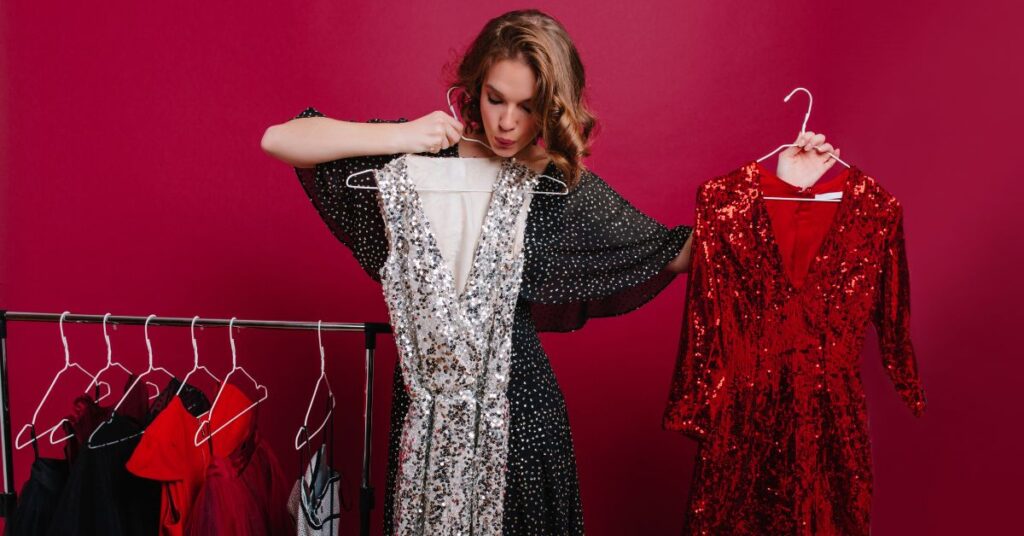Buckle up for a rollercoaster ride through the fashion time machine, where we’re about to spill the tea on the cringe-worthy, eyebrow-raising, and downright baffling worst fashion trends that made us collectively ask, “What were they thinking?” Get ready to reminisce about the fashion choices that, in hindsight, have left us with a mix of amusement and bewilderment.
In a world where style is subjective, we’re diving headfirst into the closet of questionable choices and wardrobe disasters. From the mullet skirts that had us scratching our heads to the bedazzled everything that made us question the essence of subtlety, join us as we embark on a sartorial journey through the annals of the “Worst Fashion Trends” history.
Prepare for a laughter-inducing, eye-rolling, and jaw-dropping adventure as we dissect the fashion crimes committed against good taste. Whether you’re a fashion connoisseur or just someone who appreciates a good cringe, this blog post is your front-row ticket to the fashion apocalypse.
So, grab your virtual front-row seat, fasten your seatbelt, and let’s explore the wild, wacky, and downright weird world of the “Worst Fashion Trends” together. Trust us, you won’t want to miss this fashion-forward journey through the good, the bad, and the utterly baffling.
Are you ready to reminisce about the fashion choices that time forgot? Let the unraveling of fashion’s greatest mysteries begin!
The Concept of Worst Fashion Trends
The concept of “worst fashion trends” is subjective and varies over time and across different individuals and cultures. What one person considers a fashion faux pas, another might see as a bold statement or a creative expression. However, there have been some trends that have garnered widespread criticism and are often cited as examples of fashion gone awry. Keep in mind that opinions on fashion are highly personal, and what one person dislikes, another might appreciate.
10 of The Worst Fashion Trends in Recent Memory
Embark on a journey down the memory lane of style as we unveil “10 of The Worst Fashion Trends in Recent Memory.” From head-scratching ensembles to cringe-worthy accessories, join us in revisiting the trends that left a mark for all the wrong reasons. Get ready to explore the fashion faux pas that sparked both intrigue and raised eyebrows, showcasing the ever-evolving landscape of style choices over the past few years.
1. The Shoulder Pad Craze of the 1980s
In the 1980s, a distinctive trend took over fashion with the widespread adoption of shoulder pads. This style revolution aimed to create a powerful, assertive silhouette, reflecting the era’s embrace of corporate power dressing amid women’s increasing presence in the workforce.
This trend wasn’t just about fashion; it mirrored societal shifts. As women sought empowerment and visibility in the professional realm, the exaggerated shoulders became symbolic of strength and authority, permeating not only the workplace but also popular culture and red-carpet events.
However, what was once celebrated is now often considered one of the worst fashion trends. Critics argue that the oversized shoulder pads led to a boxy and disproportionate appearance, overshadowing the natural contours of the body. The trend’s ubiquity contributed to a sense of excess and impracticality, and as fashion evolved into the 1990s, there was a collective move towards more streamlined and minimalist styles.
While emblematic of its time, the 1980s shoulder pad craze serves as a reminder of how fashion trends, though impactful, can eventually be deemed excessive and impractical in retrospect.
2. Bell Bottom Blues
Bell-bottom pants, originally worn by sailors in the 19th century for practicality, found a cultural resurgence in the 1960s. The wide flare became a symbol of counterculture and rebellion during that era.
In the 1970s, bell-bottoms reached their peak, becoming a fashion craze embraced by celebrities and everyday individuals alike. However, as the 1980s ushered in a more tailored and streamlined aesthetic, bell-bottoms rapidly declined in popularity.
The bell-bottom trend offers lessons in the cyclical nature of fashion. From its utilitarian origins to becoming an icon of individualism, it eventually faded as tastes evolved. This journey illustrates the dynamic relationship between fashion, culture, and societal shifts, reminding us that styles may come and go, leaving a lasting imprint on our collective memory.
3. Low-Rise Jeans Disaster
In the early 2000s, low-rise jeans took the fashion world by storm, defining an era with their waistline sitting significantly below the natural waist. Despite their popularity, this trend brought about practical challenges. Many wearers found them uncomfortable, as the jeans tended to slip down, requiring constant adjustments. The style’s impracticality extended to issues of modesty, often resulting in exposed undergarments and making certain movements uneasy.
While low-rise jeans made a cultural impact by embracing a more revealing and body-centric fashion ethos, they were not without criticism. The trend was exclusive, favoring a specific body type, and faced backlash for perpetuating unrealistic beauty standards. Critics highlighted these shortcomings, underscoring the limitations and drawbacks of a trend that, despite its initial popularity, eventually waned. The low-rise jeans disaster serves as a reminder that even influential fashion trends can be fraught with practical and cultural issues, shaping and reflecting the ever-evolving landscape of style.
4. Velour Tracksuits: A Juicy Mistake
In the 2000s, velour tracksuits experienced a meteoric rise in popularity, only to fall from grace in the fashion realm. Originating as sportswear, these matching sets made from soft, velvety fabric gained prominence, thanks in part to celebrities like Paris Hilton and Jennifer Lopez, who embraced them as casual chic.
The allure of velour tracksuits lay in their comfort and the ease with which they bridged the gap between leisure and luxury. The trend became a symbol of casual glamour, often associated with a laid-back yet stylish lifestyle.
However, as fashion evolved, velour tracksuits faced a backlash and are now considered a fashion faux pas. The very features that contributed to their initial success—flashy logos, overly coordinated ensembles, and a penchant for excess—became the reasons for their downfall. The tracksuit’s ubiquity and association with a specific era rendered it outdated, leading to its decline in popularity.
The velour tracksuit phenomenon, once celebrated for its comfort and casual elegance, now serves as a cautionary tale about the transient nature of fashion trends and the fine line between stylish comfort and overdone excess.
5. Socks with Sandals: A Fashion Faux Pas
The combination of socks and sandals, once deemed a fashion faux pas, has sparked both curiosity and ridicule. Initially considered a comfortable choice, the trend gained attention for its clash between practicality and style.
While some embraced the socks-with-sandals trend for its warmth and versatility, public reactions often leaned towards mockery. The fashion choice became a source of humor and a symbol of sartorial missteps, with memes and jokes circulating on social media.
The ongoing debate between comfort and style lies at the heart of this fashion dilemma. Advocates argue for the practicality and warmth of the combination, especially in cooler weather. However, critics dismiss it as a visual contradiction, emphasizing the stylistic clash between the casual comfort of socks and the open, breezy nature of sandals.
The socks-with-sandals trend, a polarizing fashion statement, highlights the subjective nature of style and the ongoing conversation about where comfort ends and style begins in the ever-evolving world of fashion.
6. Logomania: When Too Much is Too Much
The rise of logo-centric fashion, known as “logomania,” marked a period where conspicuous branding became a dominant trend. Logos, once subtle identifiers, took center stage on clothing and accessories, reflecting a shift towards overt brand display.
However, this trend faced criticisms for its excessive use of logos. Many argued that it prioritized brand visibility over individual style, resulting in clothing that seemed more like walking billboards than personal expressions. The ubiquity of logos led to concerns about authenticity and the loss of creative subtlety in fashion.
Contemporary reflections on branding in fashion reveal a shift towards more understated and minimalist approaches. Many designers and consumers now appreciate subtler branding, emphasizing quality, design, and the overall aesthetic rather than relying solely on conspicuous logos. This evolution suggests a desire for a more nuanced and sophisticated fashion landscape, where the emphasis is on the product itself rather than the overt branding associated with logomania.
7. Neon Overload: A Flashback and Contemporary Twist
In the vibrant 1980s, neon colors became a symbol of boldness and self-expression in fashion. The popularity of neon hues was undeniable, with clothing, accessories, and even makeup embracing the eye-catching trend.
However, the visual impact of neon fashion was not without its criticisms. Detractors argued that the intense brightness could be overwhelming and even headache-inducing. Some considered the trend as more of a fad than a timeless style, associating neon with an era of excess.
Fast forward to contemporary fashion, and neon has experienced a revival with a more nuanced approach. Designers and fashion enthusiasts now incorporate neon accents strategically, recognizing the power of these colors to add flair to an outfit. Neon, once associated with excess, has found its place in modern wardrobes as a statement element rather than an all-encompassing trend.
The journey from the neon overload of the 1980s to its contemporary adaptation showcases how fashion trends can evolve and be reintroduced with a fresh perspective. Neon, while still vibrant, now adds a touch of excitement without overwhelming the fashion landscape.
8. The Ugg Boot Dilemma: Balancing Comfort and Critique
Ugg boots emerged as a cozy and comfortable fashion trend, initially embraced for their warmth and laid-back charm. However, this widespread popularity came with its fair share of criticisms and controversies.
While many praised the comfort and versatility of Ugg boots, detractors questioned their aesthetic appeal and suitability for various occasions. The boots faced criticism for their bulky appearance and the perception that they may not align with traditional notions of stylish footwear.
Despite the controversies, Ugg boots have endured and evolved. They’ve become a staple in casual and winter wardrobes, and some fashionistas appreciate their cozy allure. Ugg has also ventured into more diverse styles, attempting to address some of the criticisms and broaden their fashion appeal.
Today, Ugg boots occupy a unique space in the fashion landscape. While they may not be universally embraced, their comfort and practicality continue to resonate with many, emphasizing the ongoing debate between fashion aesthetics and the undeniable appeal of cozy footwear. The Ugg boot dilemma reflects the nuanced relationship between style, comfort, and the ever-shifting perceptions within the fashion realm.
9. The Skinny Jean Conundrum: A Tight Fit and Changing Tides
Skinny jeans emerged triumphantly, dominating the fashion scene for years with their sleek, form-fitting silhouette. Praised for their versatility, they became a wardrobe staple for many, seamlessly transitioning from casual to semi-formal occasions.
However, the reign of skinny jeans hasn’t been without critiques. Some fashion enthusiasts expressed discomfort, pointing to issues like restricted movement and potential health concerns. The tight fit raised questions about the balance between fashion and physical well-being.
As fashion preferences shifted, there was a noticeable rise in alternative styles challenging the skinny jean hegemony. Loose-fitting, wide-legged trousers and straight-cut designs gained popularity, offering a departure from the constricting nature of skinny jeans.
The skinny jean conundrum encapsulates the constant ebb and flow of fashion trends. While skinny jeans remain a go-to for many, the emergence of alternative styles signals a desire for more diverse and comfortable options. The ongoing debate prompts reflection on the evolving relationship between style, comfort, and the ever-changing landscape of fashion.
10. Ed Hardy Regrets: Navigating Fashion’s Highs and Lows
In the 2000s, the Ed Hardy brand soared to prominence, celebrated for its bold designs and tattoo-inspired graphics. The brand’s rise was fueled by celebrity endorsements, turning Ed Hardy into a cultural phenomenon.
However, public perceptions took a turn, and criticisms emerged. Ed Hardy designs faced backlash for their ostentatious and sometimes garish aesthetic. What was once trendy became associated with over-the-top embellishments and a lack of subtlety, leading to a decline in popularity.
The Ed Hardy regret saga prompts reflection on brand-driven fashion trends. It serves as a cautionary tale about the fine line between captivating designs and the risk of overexposure. The brand’s trajectory encourages a broader conversation about the enduring impact of flashy, logo-centric fashion and the importance of striking a balance between boldness and timeless style in the ever-evolving world of fashion.
Conclusion
Exploring the concept of “worst fashion trends” showcases the diverse perspectives shaping our understanding of style. What’s your take on these trends? We’d love to hear your thoughts! Drop a comment on our blog and join the conversation. Fashion is all about individual expression, and your opinion matters. Let’s chat!
FAQs
Q1. What Era had the Worst Fashion Trends?
The perception of the “worst” fashion era is highly subjective and varies among individuals. Different people have diverse opinions on what styles they find appealing or unappealing. Some may argue that certain trends from the ’80s or ’90s were over-the-top, while others may appreciate the unique flair of those decades. Ultimately, fashion is a matter of personal taste, and what one person deems the “worst” era might be considered stylish by someone else.
Q2. Why was 2000s Fashion So Weird?
The fashion of the 2000s is often considered “weird” due to its eclectic mix of styles, influenced by rapid technological changes, a futuristic Y2K aesthetic, the impact of pop culture icons, a blend of various decades, emphasis on conspicuous branding, and the rise of fast fashion. The era embraced bold and experimental looks, contributing to its unique and diverse fashion landscape.
Q3. What was the Golden Age of Fashion?
Defining a singular “golden age” of fashion is subjective, as different periods have been celebrated for various reasons. However, the mid-20th century, particularly the 1950s and 1960s, is often considered a golden age. This era witnessed the emergence of iconic designers, the rise of haute couture, and the introduction of timeless styles that continue to influence fashion today. The 1950s saw the elegance of Dior’s New Look, while the 1960s embraced the youth-driven styles of the Mod movement, both contributing significantly to the fashion world.
Also Read- Unlocking Style Secrets: What Is A Fashion Trend and Why It Matters?
– Dive into The Hottest Fads in Fashion: A Trendy Exploration


